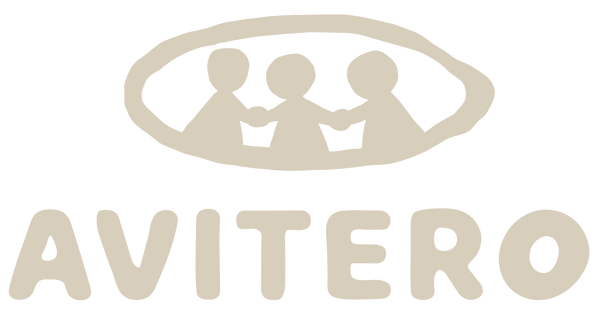Avitero Design Choices & Values
Horizontal, economic relations as a sustainable and efficient alternative to charity

General Model
Sustainability:
There are products that do not require to be grown in large monocultures. For example cacao is native to Latin America and can be cultivated in the shade and in agroforestry systems. In the case of Kemito Ene is working with the UK rainforest foundation to grow their cacao in so called agroforestry systems.
There’s also the aspect of financial sustainability. In our opinion, being dependent on grants, donations or projects is not sustainable in the long run.
We believe it’s different with economic collaboration as once communities and cooperatives have established a healthy base of customers they can maintain themselves without dependency and develop on their own terms.
Efficiency:
Indigenous communities are crucial in the effort to protect the world’s rainforests.
We are not able to assess or compare the efficiency of different charity projects.
However, we can look at a statement of José Gregorio Diaz Mirabal, elected leader of the Congress of Indigenous Organizations of the Amazon Basin (COICA) who says that: “less than 1% of all the funding that is invested in protecting intact biodiversity and mitigating climate change in our territories reaches our communities, and that has to change. It’s absurd that so much of the funding goes to consultants who are sent to tell us what we already know about how to conserve what we are already conserving.”
With the Avitero model, 50% of the product price will go to indigenous communities or their territories (check Transparency for more info).
Profit Distribution - Our ⅓-⅓- ⅓ model
If producers make between one and a few dollars a day growing cacao - should they not receive a share of the profit when their produce is sold?
We certainly think so, this is why we aim to pay one third of our profits back directly to the farmers or cooperatives we work with without any conditions.
One third will go to conservation projects in the area of the communities. This will happen in close alignment with the communities and cooperatives we work with.
The remaining third will remain within Avitero. This will help us to grow our order volumes, fund projects with new cooperatives and professionalize Avitero.
Value Creation
People regularly ask us - Why do you not just buy the cacao and produce the chocolate in Germany?
The answer requires a brief look back in history: Latin American colonies were meant to be resource producers for the European “center”. This is why the Spanish prohibited manufacturing and impeded local industry in its colonies.
These dynamics often persist to this day. We aim to reduce this imbalance by leaving as much of the value generation as possible in the communities we work with. This means if they already have a brand, we will be selling their brand and if they already have a process of refining the product e.g. turning cacao into chocolate, we will sell their chocolate.
Transparency
We aim to provide financial transparency on our projects.
This is roughly the cost distribution we expect (as % of product price):
Price of products: 35%
Shipping to Europe: 10%
Customs, legal and administrative costs: 10%
Avitero organization: 15%
VAT: 7% (for food)
Margin: 23%

